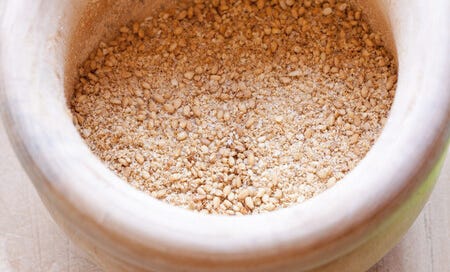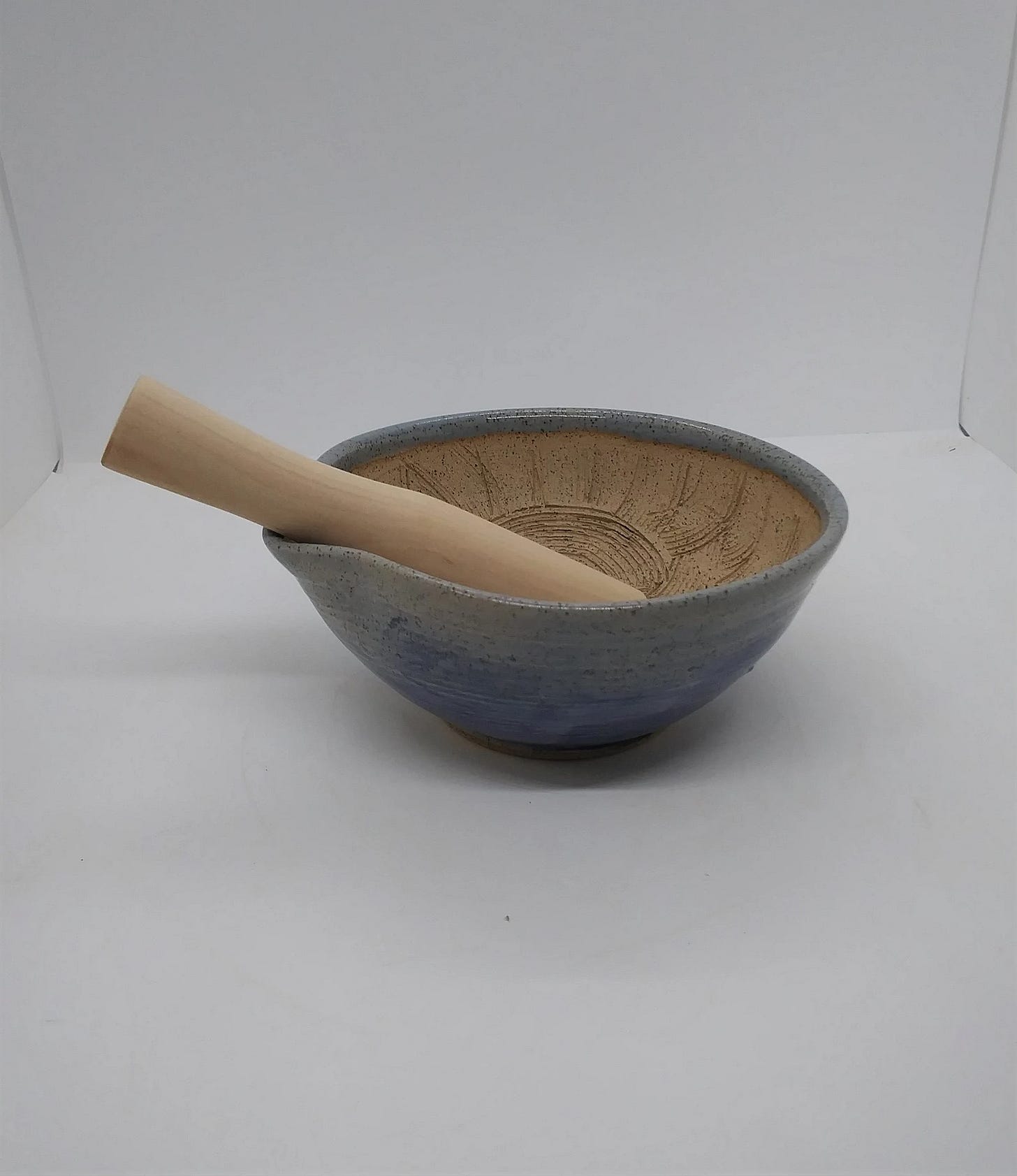An Ode to Sesame
And a recipe for what I've been drizzling over everything lately (aside from good EVOO, of course)
My unconditional love for good extra virgin olive oil is no secret; if you have been following me for some time, or ever taken a class with me, or read my cookbook, you know this already. (Heads up! A deep dive into Spanish EVOO online class with our friends at The Civic Kitchen SF is coming your way this January, stay tuned for more info!)
Today I want to wax poetic about another healthy fat I adore: sesame. In all its formats: seeds, oil (both virgin and toasted), and perhaps most of all as a paste, aka tahini. But it has to be the runny, Middle-Eastern kind, not the pasty stuff you find at some health food shops that sticks uncomfortably like glue to your tongue and the roof of your mouth. In the US, this brand is easy to find and delicious. Here at home, I have been alternating between this Lebanese brand and this Israeli one, and there’s also one from Jordan that often appears on the shelves in my area. Funnily enough, the seeds themselves don’t come from the Middle East but from Africa, namely Ethiopia, but are processed in the Middle East, where they eat it on and with everything.
Sesame -and its byproducts- is a nutritional powerhouse, packed with minerals (which are so missing from our Western diets) and healthy fats. It’s a great source of calcium, especially for those of us who don’t do dairy.
But most important, it’s absolutely scrumptious. A spoonful of tahini sometimes even satisfies my craving for sweet, even though -I know- it’s not sweet at all.
My breakfast toast for years and years has featured the stellar combination of tahini and miso; they complement each other perfectly: tahini’s creamy fat, slightly bitter, countered by the salty umami of miso. Take a tablespoon of each and mix them with a spoon in a small bowl or ramekin, add some warm water to make it even creamier and spread. Trust me on this one. You can also add more water (and other flavors such as ginger or tamari) and turn it into a dressing for salads or a marinade for meats, tofu or tempeh.
Gomasio -sesame seeds, toasted and ground with salt in a suribachi, a Japanese mortar and pestle specially designed for grinding seeds, thanks to its sharp ridges- happens to be the most important takeaway from my fervent macrobiotic phase. Be careful, though, it’s perfectly addictive and can turn easily from a condiment into something you want to eat with a spoon. You can buy ready-made gomasio, but try to experience the pleasure of making it at home: the toasty aroma of the seeds as you grind will delight you, and a suribachi is such a beautiful object to admire (I have several).
Virgin or untoasted sesame oil is the one I reach for when I want to cook something with an Asian flavor profile, which I don’t want to taste of olive oil. It’s a rare occasion that that occurs in my kitchen (because olive oil), but if and when it does, that’s the alternative.
Toasted sesame oil tends to be divisive: you either love it or hate it. I know many cooks who are on the latter side, because they feel it is too overpowering. Yes, its flavor is strong but should only be used a few drops at a time, as a seasoning, not as a cooking oil.
The recipe I am sharing with you today is a variation of Rayu, an aromatic Japanese oil, and I adapted to my palate a recipe from Hetty Mckinnon’s To Asia with Love (a wonderful cookbook, she is the queen of recipe developing).
Keep reading with a 7-day free trial
Subscribe to Sobremesa's Table Talk to keep reading this post and get 7 days of free access to the full post archives.






